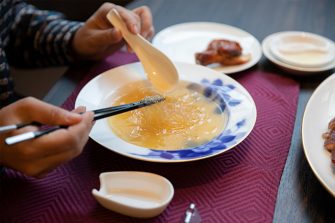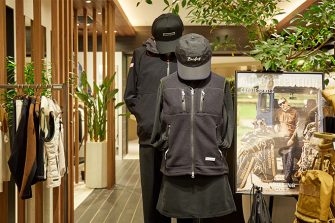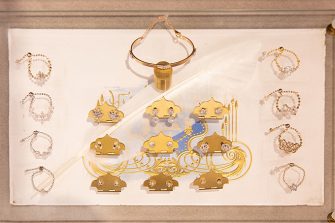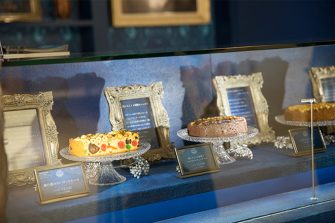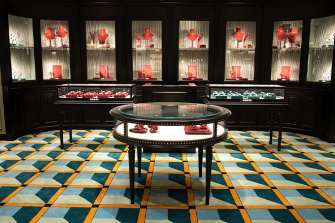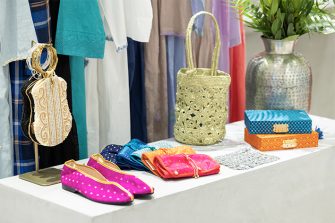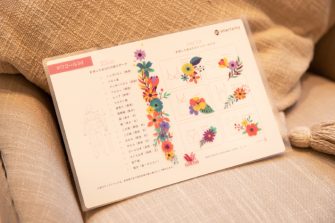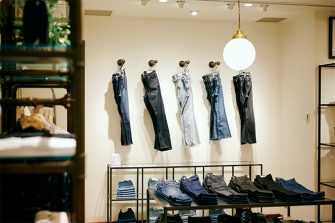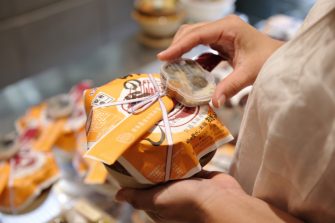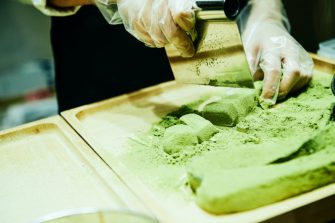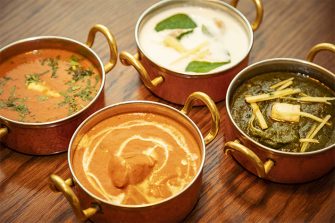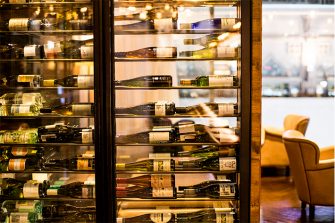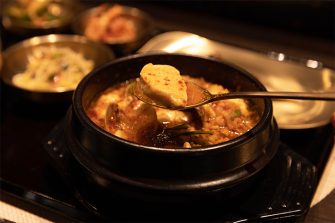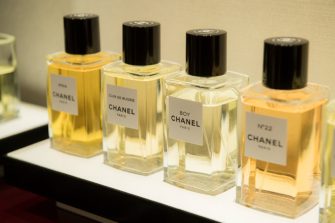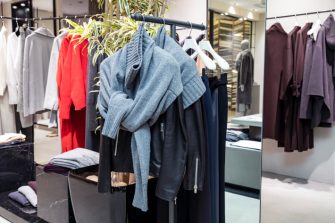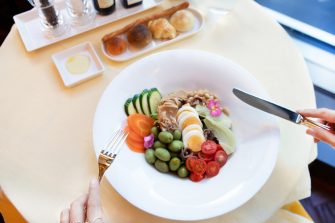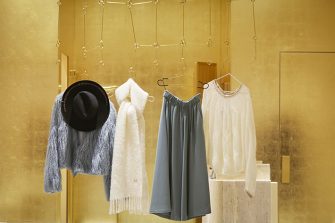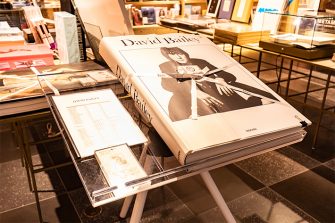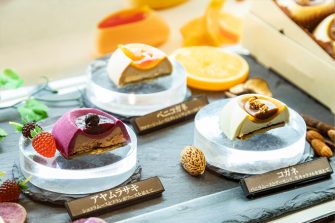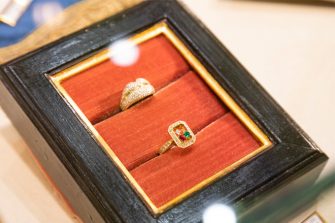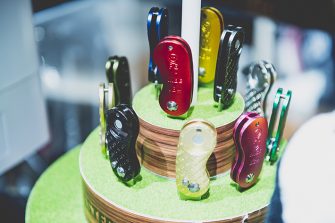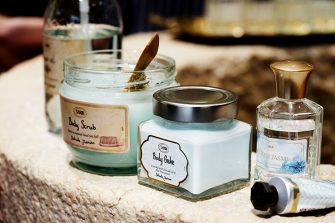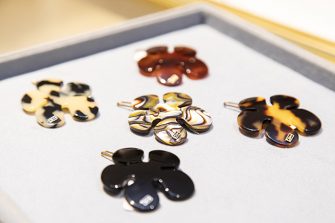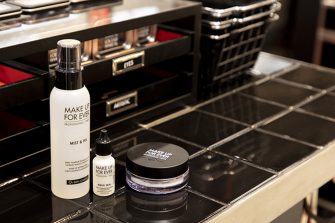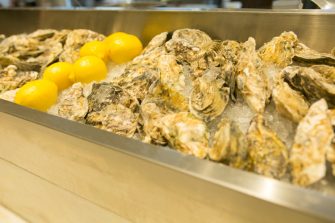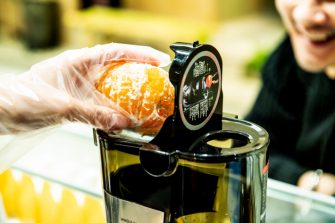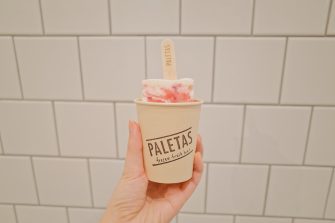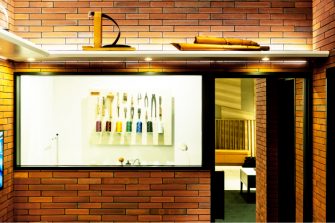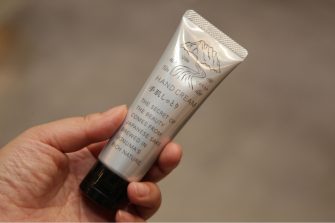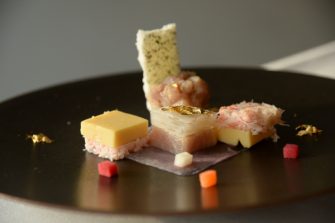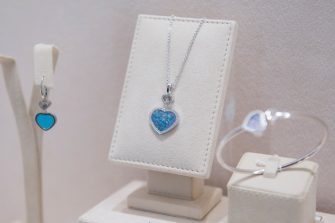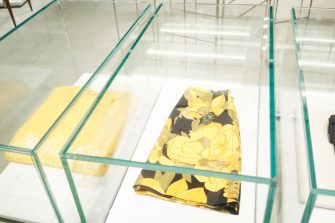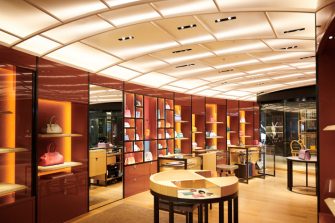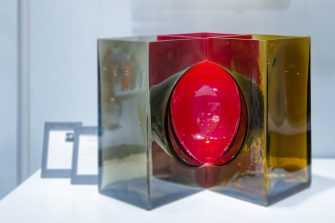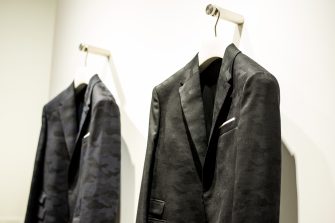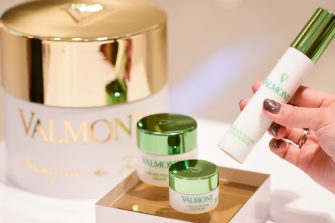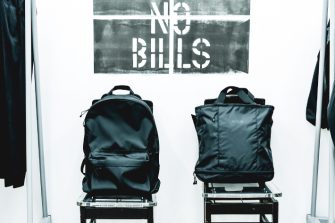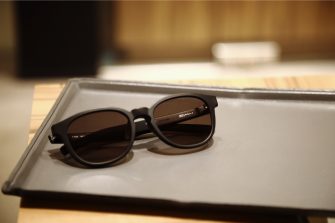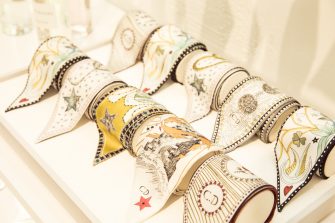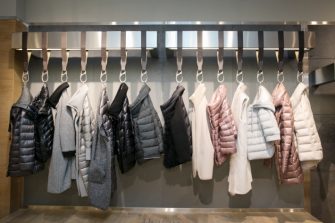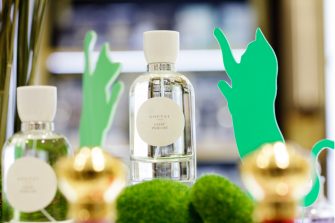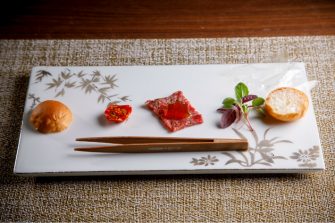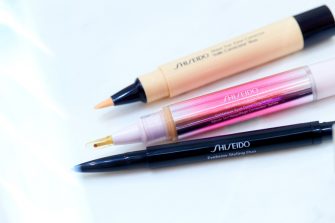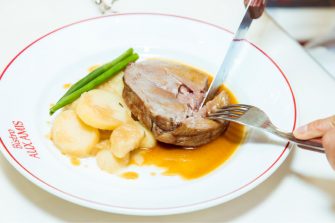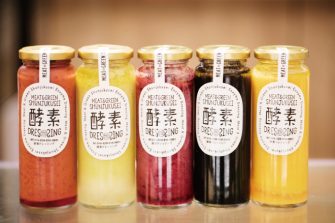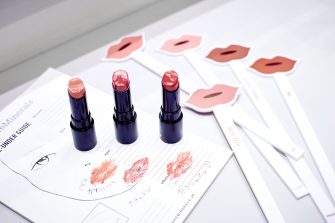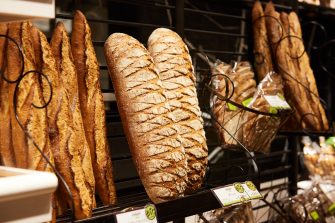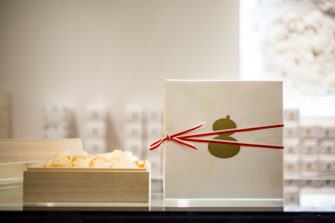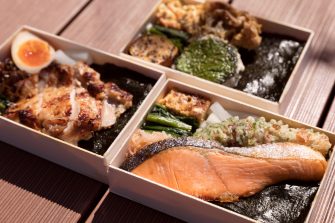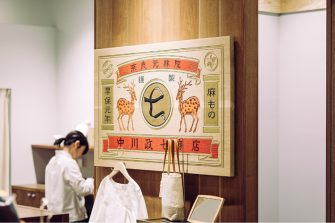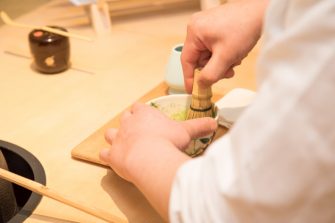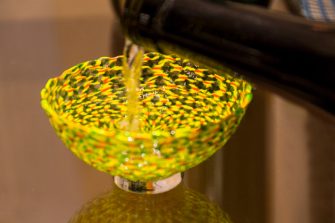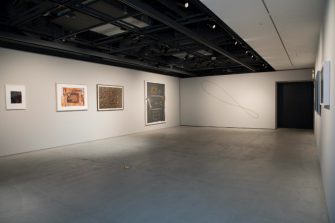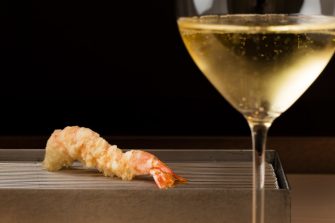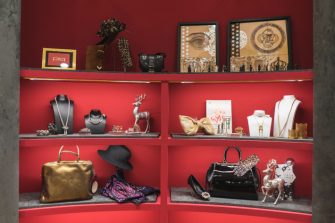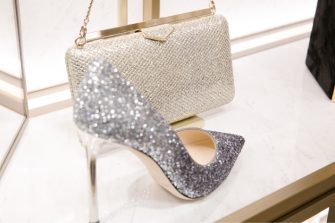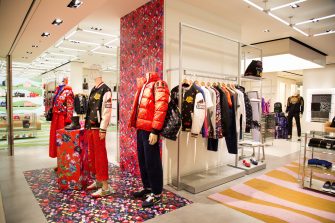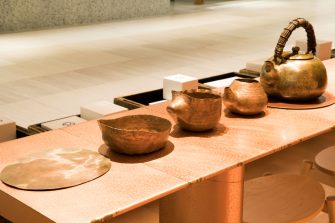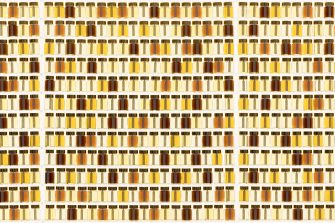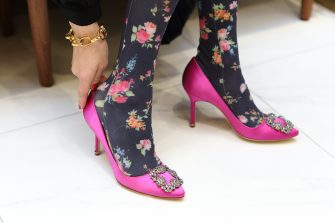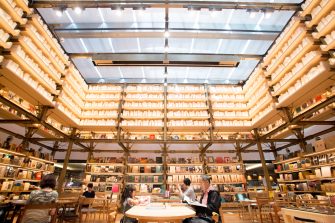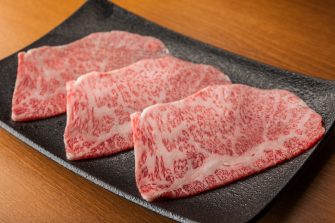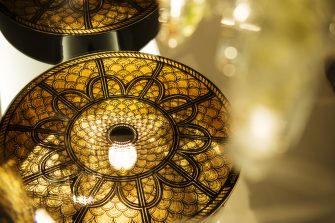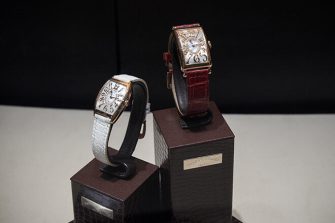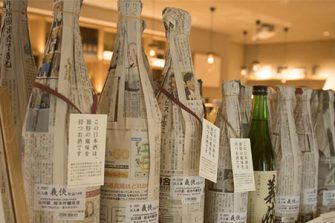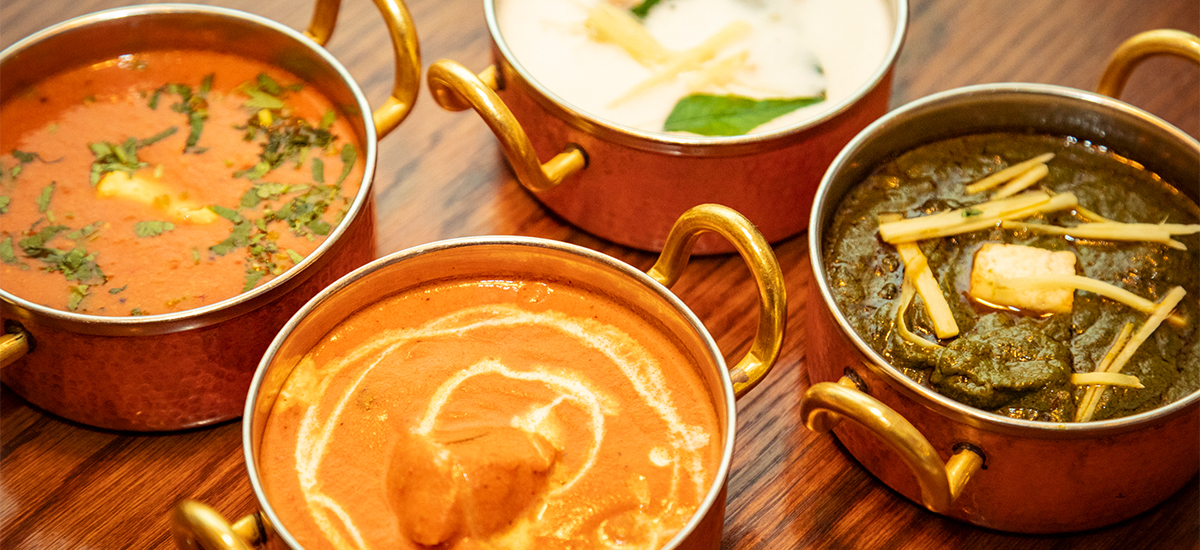

GINZA SIX EDITORS
ファッション、ジュエリー&ウォッチ、ライフスタイル、ビューティ、フード…
各ジャンルに精通する個性豊かなエディターたちが、GINZA SIXをぶらぶらと
歩いて見つけた楽しみ方を綴ります。
GINZA SIXをめぐる冒険 A GINZA SIX Adventure
江部 拓弥
GINZA SIX EDITORS Vol.95
僕が暮らす町には、銀座を名乗る古い商店街がある。かつては通りに人が溢れ、たいそう活気があったそうだが、僕が知る限りは実にのんびりとした商店街である。入口には年季の入ったいまはもう役に立たない案内板が鎮座していて、手描きの地図に「銀六商会」と記された一画を見つけることができる。ある日、僕は銀六の文字を目にして、ふとGINZA SIXのことが頭をよぎった。戸越銀座の「銀六商店街」を仕事で訪れたときも、そう。脳内で銀六がGINZA SIXに置き換えられて、不思議な気分。もっと言えば、僕が生まれ育った町には「銀八すし」という鮨店があって、帰郷してその店の前を通り過ぎると、GINZA EIGHTかよと、心の中でツッコミが入る。なんだか、日々の暮らしの中のGINZA SIX always on my mindという按配に、ちょっとびっくりする。
そうは言っても、肝心のGINZA SIXに足を運ぶことは、1ヶ月に一度あるかないか。いや、そんなにないなぁ。中央通りを歩いていて、ひゅーっと吸い込まれるように入ることが、年に何度かある。そんなときはGINZA SIXなんだからと、迷わず6Fを目指す。特段、6という数字に意味深いことはなくて、理由を求めるなら、6Fにはレストランが並んでいるからとなる。要は空腹なんですね。同じ階にある「銀座 蔦屋書店」に立ち寄りたい衝動を抑えながら、インド料理店の「Tamarind(タマリンド)」へ。
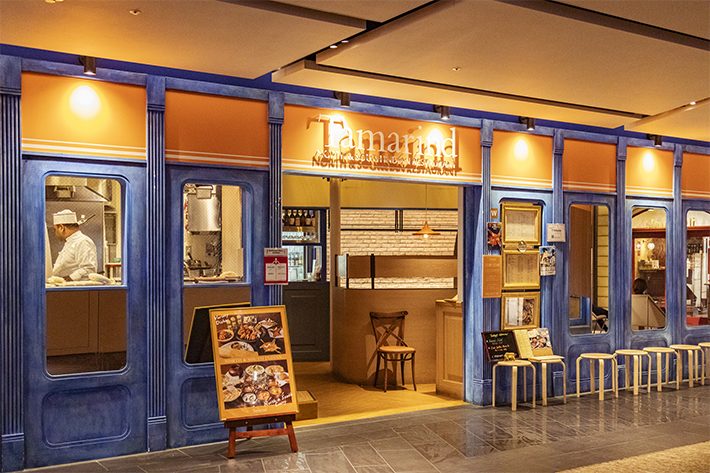
「カレーの誘惑には抗わない方がいいよ」
30年前、大学生だった僕に学食のおばちゃんが掛けてくれた言葉。いまも忠実に守って、いざタマリンド。
細分化が進む昨今のジャパニーズインド料理店の中で、北インドも南インドも全方位型であることが、ちょっと嬉しい。シェフも北インドと南インドから、それぞれやって来ているという。おー、それならば話を訊きたいですねと歩み寄れば、満面の笑みを浮かべたシェフは、たどたどしく「ニホンゴ、ムズカシイネ」。
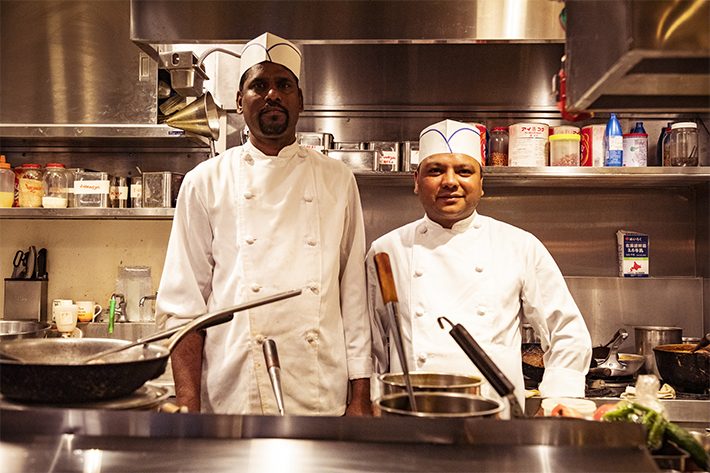
そうか。ここはインドなんだな。目に鮮やかな店内の色彩も、日本ではあまり見かけないハンカチのように折り畳むインドの薄焼きパン「ルマリロティ」が当たり前のように並ぶメニューも、多彩な言語が飛び交う客たちの話し声も、日本人の日本人による日本人のためのインド料理店ではなくて、真っ当なインド料理店なんだと、腑に落ちる。銀座でいちばんインドに近い場所かもね。

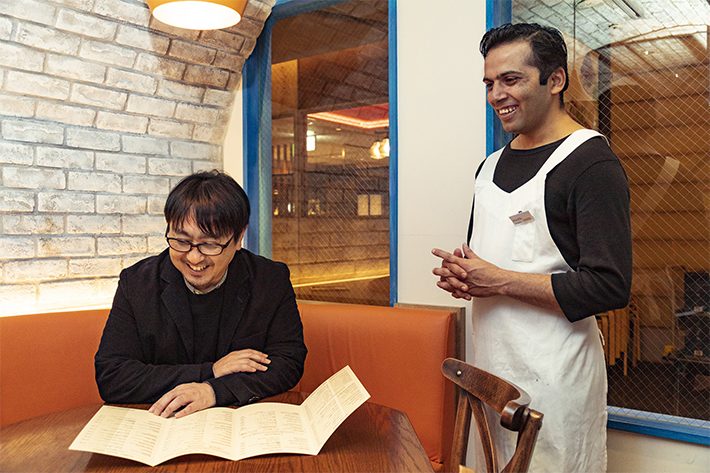
この日は、北インドからは定番の「チキンバターマサラ」とほうれん草を使った「サグチキン」、南インドからはケーララ州の白いカレー「チキンステュー」とココナッツ香る「マラバール風フィッシュカレー」を注文する(各1,580円 ※以下、全て税抜価格)。
欲張り過ぎたかな。そう思いながらも、スパイスの香りに食欲が刺激され、箸が止まらない(使っているのはスプーンですけどね)。奇を衒わないスタンダードな味わいに、そうそう、こういうカレーが食べたかったんだよ、と口許がゆるむ。
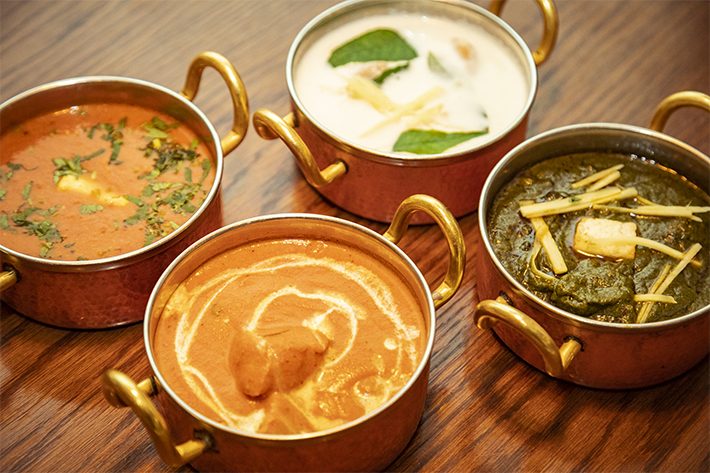
実を言うと、タマリンドの楽しみは料理だけじゃない。もし、空いていたら、奥の席に座って背の部分のボタンをためらわずに押してみるといい。厨房の方向に視線を移せば、星がキラキラ。おいしくいいただいたら、星三つをぜひとも。シェフたちも大喜び。いいなぁ、こういう遊び心。
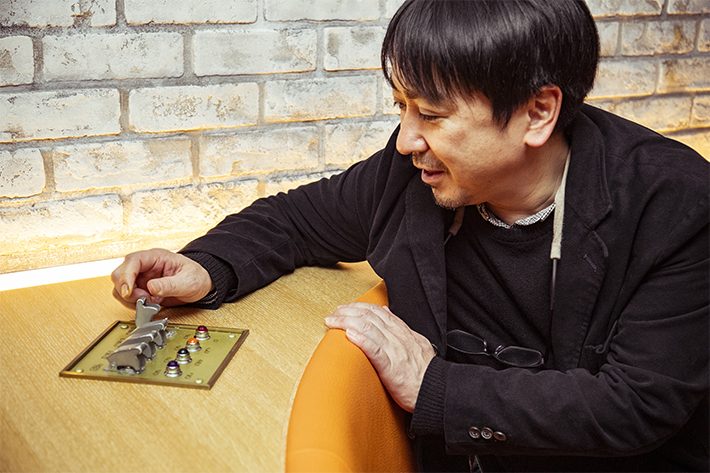
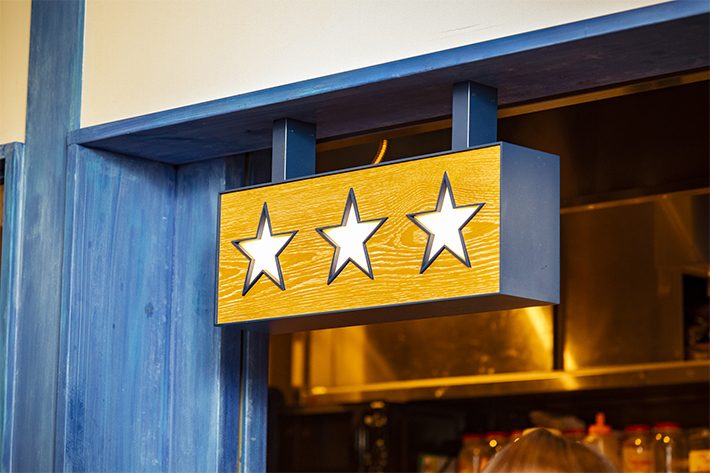
「カレーを食べた後、コーヒーが飲みたくなる理由、知ってる?」
高校生のとき、毎日のように通っていた喫茶店のお姉さんが、僕に訊いてきた。そもそも、カレーの後にコーヒーを飲みたいと思ったことがなかったから理由なんてわかるはずもない。大人とはそういうものなのかとカレーを食べ続けて幾星霜。カレーの後にコーヒーを飲みたくなることはあるものの、その理由はさっぱりわからず。お姉さんに理由を訊きたくても、喫茶店はもうない。
GINZA SIXの6Fから13Fへと上がる。コーヒーを飲もうと「GRAND CRU CAFÉ GINZA(グラン クリュ カフェ ギンザ)」へ。

カレーの後のコーヒーだけれど、喫茶店という趣ではない。コーヒーハンターと呼ばれるJose. 川島良彰さんがプロデュースするその店は、めくるめくコーヒー体験が味わえることで知られていて、貴さと妖しさが漂っている。どこか「ツインピークス」のクーパー捜査官の夢の中を彷彿させる設えに、それなりの緊張と少々の気おくれを感じながら足を踏み入れる。
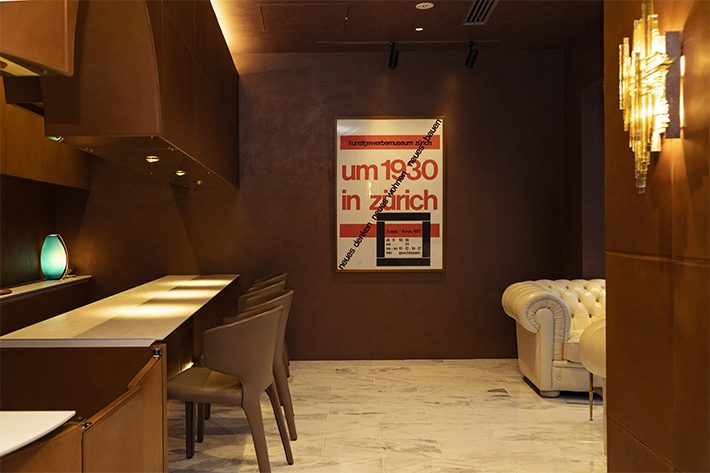
そこから先は、コーヒーに対する常識が遥か彼方へ吹き飛ぶような展開が繰り広げられていく。図鑑の如きメニューには、懇切に綴った文章で世界から選りすぐったコーヒー豆が紹介されている。さて、どれにしようか。僕はゲイシャとブルーマウンテンで迷い、後者を選んだ。高校時代、かの喫茶店でブルーマウンテンは一杯2,000円。一度も口にすることなかったもんなぁ。
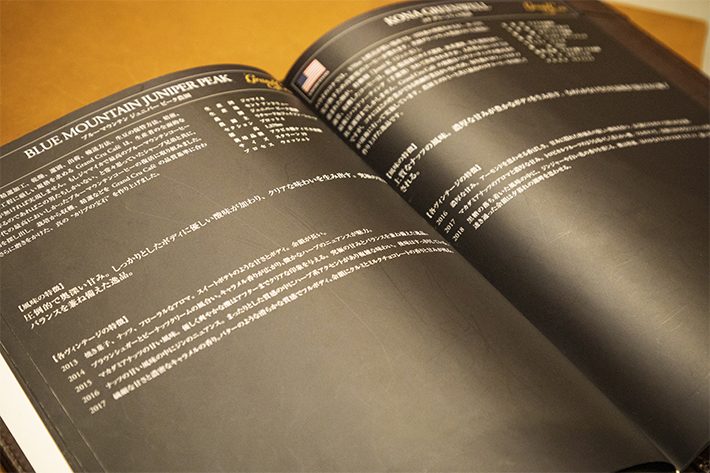
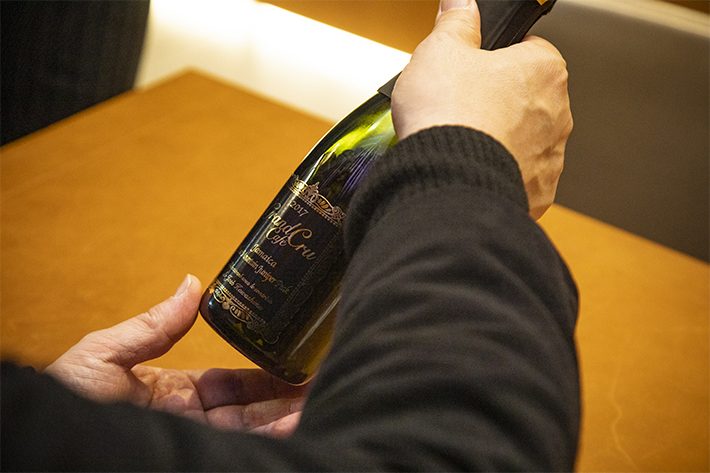
果たして、本物のブルーマウンテンとは何か。ぼんやりとしていた僕のブルーマウンテン像は、コーヒーの伝道師ことエバンジェリストの長谷川宗佑さんの丁寧な解説で、理解が深まる。おいしいは情報も大切ですからね。
シャンパンボトルに入った「ブルーマウンテン ジュニパー ピーク農園」(15,000円〜)が恭しく登場すると、その場で挽かれた後、ドリップ。初期オールドノリタケのカップで供された。味、香り、余韻を愉しむ。至福。
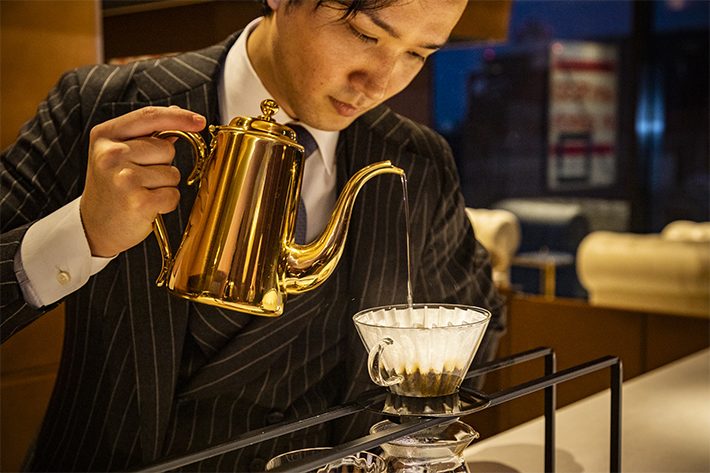
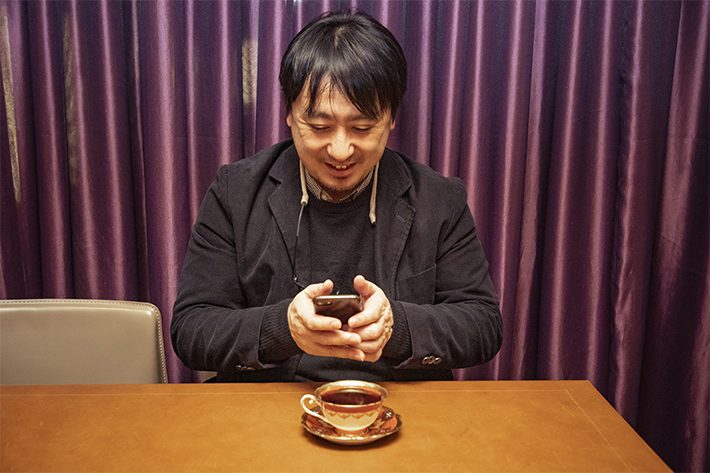
ちなみに、注文したマイボトルはセラーにキープされ、2週間以内であれば豆がなくなるまで、繰り返し味わうことができる。銀座のクラブでボトルをキープしたことはないけれど、GINZA SIXでコーヒーのボトルをキープする日が来るとは、思いもしなかったな。
帰りがけ、5Fに立ち寄って「Snow Peak Mobile(スノーピーク モバイル)」へ。
インド、ジャマイカを経て最後に帰る場所は我が故郷。「スノーピーク」は僕が生まれ育った新潟県三条市が世界に誇るアウトドアブランドなんですね。銀座の真ん中に故郷を感じて嬉しくなる。
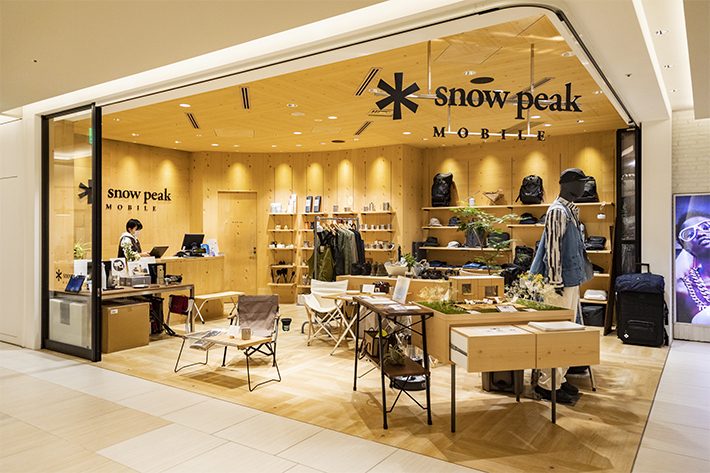
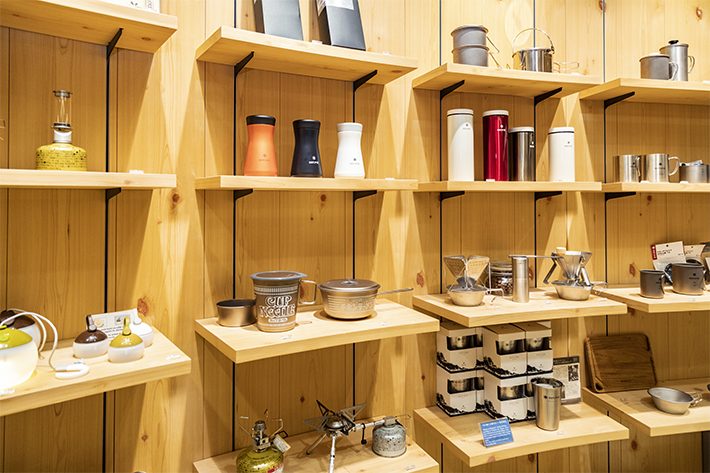
ここは、都市型生活の新たなマルチハビテーションを提唱する世界初のコンセプトショップだという。なるほどなぁ。いつか、マルチハビーテーションな日々が訪れることを夢見ながら、ぐるりと店内をまわって、焚き火のときに重宝するという「Indigo TAKIBI Vest」(34,000円)を羽織ってみる。スノーピークの存在と故郷がシンクロして、センチメンタルな気分。子供の頃、家の裏庭でじいちゃんと焚き火をしたことを想い出して、胸がちょっと熱くなる。
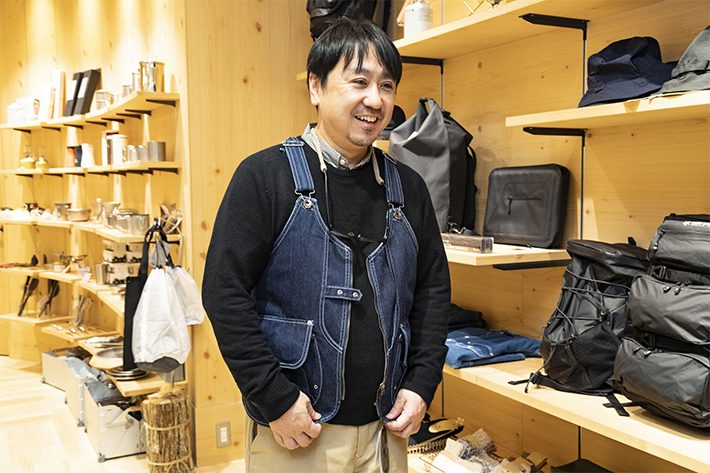
入口付近で、クールなボトルを発見。なんと、日本酒だという。訊けば、コンセプトは「アウトドアで日本酒を楽しむ」。興味津々。ボトルを手に取れば「爽醸 久保田 雪峰」とある(3,000円)。朝日酒造との共同開発だと訊いて、さらに前のめりになる。焚き火を前に日本酒を愉しむ姿を妄想する。たまりません。老後の楽しみにしよう。
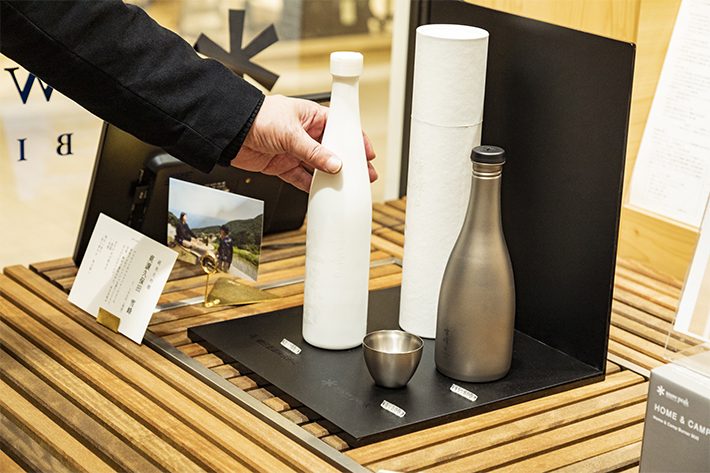
1Fに降りて、GINZA SIXから中央通りへ出る。帰り道、銀座の真ん中で近所の商店街の景色が頭をよぎる。遠い異国が、生まれ故郷が、そしていま僕が暮らす町が、ぐるっと繋がっているような幸せな気分に包まれて、駅へと向かった。
Text: Takuya Ebe Photos: Kanako Noguchi Edit: Yuka Okada(81)
The district where I live has an old shopping street named Ginza. In the past, this was apparently a vibrant place teeming with shoppers, but I’ve only ever known it as a quaint and quiet little street. There’s a guide map posted at the entrance, but with so many years gone by, it’s not all that helpful. On the handwritten map, you can find a block with the name Ginroku Shokai. I saw the characters “Gin” and “Roku,” which means six, and immediately thought of GINZA SIX. On assignment at a shopping street named Ginroku Shotengai in Togoshi Ginza, I thought the same thing. My brain somehow replaced Ginroku with GINZA SIX; it was weird. What’s more, in the town where I was born and raised, there’s a sushi shop named Ginpachi Sushi, and whenever I go home and pass by the shop, I think “GINZA EIGHT;” it seems to have lodged in my mind. In the midst of my daily life, I’m a bit surprised to find GINZA SIX so often on my mind.
Having said this, I think I actually only venture into GINZA SIX maybe once a month or so. Maybe less. I along walk Chuo-dori Avenue and find myself drawn in through the door a few times a year. When that happens, it automatically occurs to me: I have to go to the sixth floor. No, the number 6 has no special meaning for me. It’s just that the sixth floor is where the restaurants are. That’s the reason. And, basically, I’m hungry. Suppressing the desire to stop by Ginza Tsutaya Books—also on the sixth floor—I head to Tamarind, an Indian restaurant.

“It’s best not to resist the lure of curry.” These words of wisdom were spoken to me by the lunch lady thirty years ago when I was in college. I attend to them even today. Now, I’m at Tamarind.
With Japanese Indian restaurants becoming more specialized of late, it’s nice to see Tamarind is neither North nor South India. It’s omnidirectional. The chefs, too, I’m told, are from northern and southern India. I ask to hear a little more about this. The chef, smiling from ear to ear, says, with some difficulty, “Japanese is difficult.”

“I see,” I say. So this really is India. The vibrant colors inside; a menu that naturally features Rumali Roti, a thin Indian flatbread that folds like a handkerchief and which is rare to find in Japan; the voices of customers speaking in various tongues—this is more a true Indian restaurant than an Indian restaurant run by Japanese for Japanese. Makes total sense. In all of Ginza, perhaps this place is closest to India.


Today, I order, from North India, the standard Chicken Butter Masala and Saag Chicken, made with spinach. From South India, I order Stewed Chicken, a white curry from Kerala, and Malabar Fish Curry, with an aroma of coconuts (1,580 yen each; all prices listed before tax).
Am I gluttonous? Perhaps. But the aroma of spices stimulates my appetite, and I’m powerless to halt the motions of my spoon! The flavor of the quite standard standard… yes, yes, this is the curry I’ve wanted. I find myself beaming.

The joy of Tamarind transcends food. Sit at the table in the back when it’s vacant and go ahead and press the buttons behind you. Now look toward the kitchen—see the stars light up! If you love what you’re eating, go ahead and give them three stars. It’s a charming, whimsical arrangement bound to delight all, the chefs included.


“Do you know why eating curry makes you want to drink a cup of coffee?”
This question was put to me by a waitress at a coffee shop I went to almost every day in high school. I never found myself wanting to drink coffee after eating curry, so, of course I didn’t know why. It must be an adult thing, I thought. I continue to eat curry after so many years. I do sometimes want a cup of coffee after curry, but I don’t know why. I want to ask the waitress, but the coffee shop is no longer there.
I go from the sixth floor of GINZA SIX up to the thirteenth floor to Grand Cru Café Ginza. I want some coffee.

I’m having coffee after curry, but this isn’t an ordinary coffee shop. It’s a café produced by José Yoshiaki Kawashima, coffee hunter extraordinaire, known as a place for dazzling coffee experiences. It gives off an exalted and mysterious air. It feels a bit like Twin Peaks, as if it may have appeared in one of Agent Cooper’s dreams. With a corresponding sense of tension, and even a little trepidation, I step inside.

And I enter an atmosphere where the conventional conceptions of coffee appear to have vanished. The menu is a field guide. The writing is reflective. It presents the café’s coffees, selected from the world over. So, which to choose? I vacillate between Geisha and Blue Mountain and end up going with the latter. At that coffee shop in high school, Blue Mountain was 2,000 yen a cup—I never had it, not even once.


What makes authentic Blue Mountain coffee? I had only the vaguest notions, but thanks to the detailed explanation by coffee evangelist Shusuke Hasegawa, my knowledge deepens. Information is a key component behind what you find delicious.
Blue Mountain Juniper Peak in a champagne bottle (from 15,000 yen) appears. It’s ground on the spot, dripped, and served in an early-period Old Noritake cup. The flavor, the aroma, the aftertaste—pure bliss.


Incidentally, they’ll keep the bottle you order in their cellar so you can receive free coffee for up to 2 weeks, as long as the beans have not run out. I’ve never had a bottle kept for me at a Ginza club. I never thought the day would come when I would keep a bottle of coffee at GINZA SIX.
On my way back, I pop into Snow Peak Mobile on the fifth floor. I’ve been to India, to Jamaica, and now, finally, I return to my hometown. Snow Peak is a world-famous outdoor gear brand from Sanjo, Niigata, where I was born and raised. It’s a joy to get that hometown feeling in the middle of Ginza.


This is the first concept shop in the world to advance a new, urban style of multihabitation. Dreaming my days of multihabitation will arrive someday, I sojourn around the shop and try on the Indigo TAKIBI Vest (34,000 yen), a handy thing to have when starting campfires. Snow Peak syncs with my hometown, and now I’m feeling nostalgic. I think back to making fires with my grandfather out in our backyard when I was kid, a heart-warming memory.

Near the entrance, I find a cool bottle. Hey, it’s sake! I ask, and the idea is sake for the outdoors. Very interesting. I inspect the bottle: it’s Soujo Kubota Seppou (3,000 yen), developed jointly by Snow Peak with Asahi-Shuzo brewery. I lean a little further forward. I imagine myself enjoying a cup of sake in front of a campfire. I can’t get enough, but I think I’ll save it for after retirement.

I descend to the first floor and exit GINZA SIX onto Chuo-dori. On my way home, in the middle of Ginza, my neighborhood shopping street comes back to mind. Far-off foreign lands, the town where I was born, and the place I live now. They all connect in a swirl, filling me with happiness as I return to the station.
Text: Takuya Ebe Photos: Kanako Noguchi Edit: Yuka Okada(81)
江部 拓弥
1969年生まれ。早稲田大学卒業後、プレジデント社に入社。「プレジデント」編集部などを経て、2006年より「dancyu」の編集に携わる。2012年9月〜2017年7月まで「dancyu」編集長として55冊を手がけ、2017年11月に編集長として「dancyu web」を立ち上げる。
https://dancyu.jp


